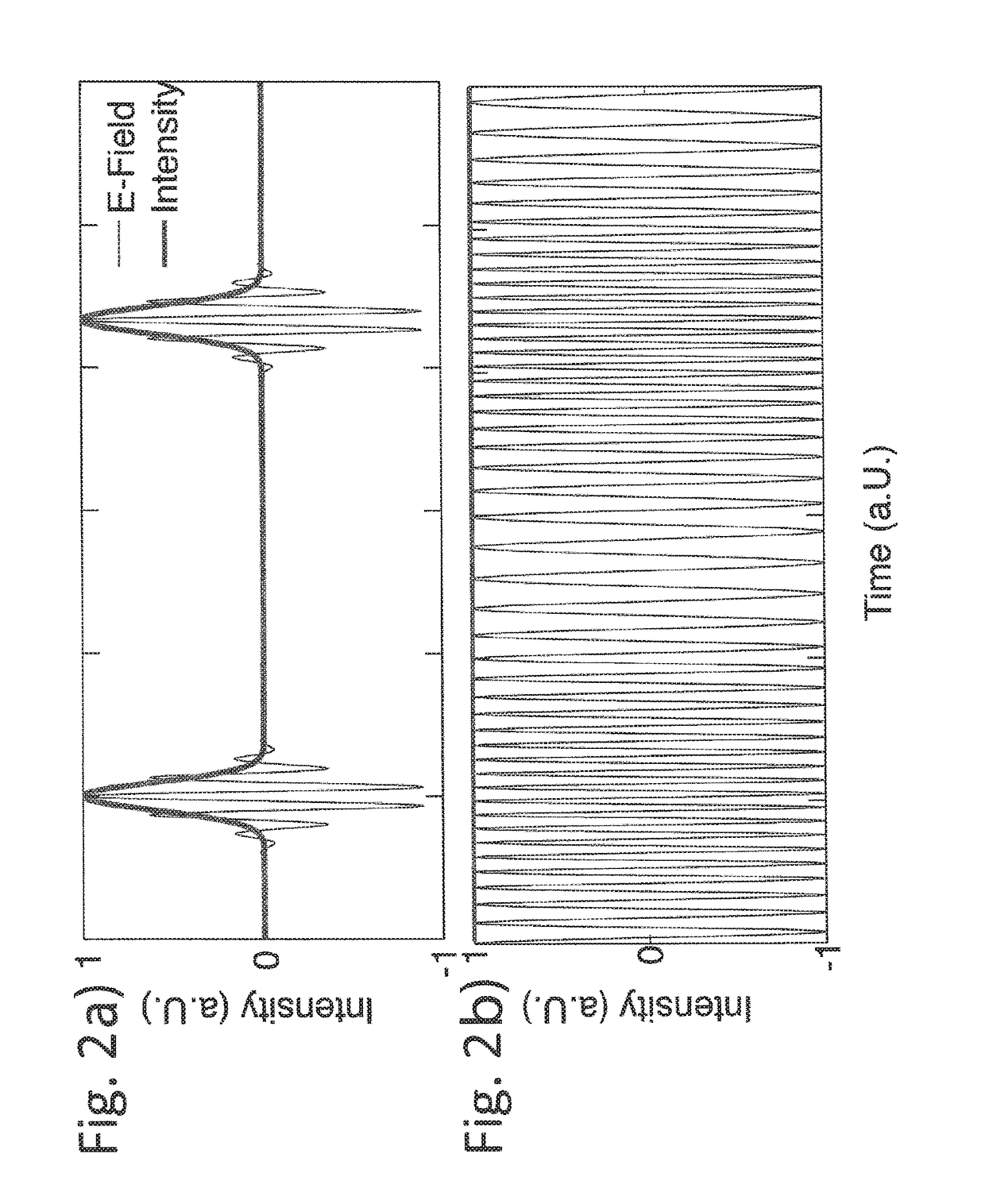Method for Optical and Electrical Signal Processing of a Multi-Heterodyne Signal Generated by a Multi-Mode Semi-Conductor Laser and Detection Device Utilizing that Method
- Summary
- Abstract
- Description
- Claims
- Application Information
AI Technical Summary
Benefits of technology
Problems solved by technology
Method used
Image
Examples
Embodiment Construction
[0054]FIG. 3 shows an embodiment of an arrangement of multi-heterodyne setup. As a device setup the arrangement of FIG. 3 is known as prior art. The output of two multimode lasers and / or combs 11, 12 are combined with an optical element 13 to generate a multi-heterodyne beating within beam 15 containing the sample signal of cell 25 on the detector 20.
[0055]Such a multi-heterodyne system is built with at least two semiconductor multi-mode sources 11 and 12. A multi-heterodyne spectrometer is based on the readout of the amplitudes and / or relative phases and or frequencies of a multi-heterodyne signal in the RF-domain. This readout gives information about the sample in question. The information includes phase, absorption and emission. As an example, it allows to do spectroscopy. It is useful for optical analysis for substrate and sample analysis and identification. Other implementations include optical communications with a multi-heterodyne setup.
[0056]One possible implementation of a ...
PUM
 Login to View More
Login to View More Abstract
Description
Claims
Application Information
 Login to View More
Login to View More - R&D
- Intellectual Property
- Life Sciences
- Materials
- Tech Scout
- Unparalleled Data Quality
- Higher Quality Content
- 60% Fewer Hallucinations
Browse by: Latest US Patents, China's latest patents, Technical Efficacy Thesaurus, Application Domain, Technology Topic, Popular Technical Reports.
© 2025 PatSnap. All rights reserved.Legal|Privacy policy|Modern Slavery Act Transparency Statement|Sitemap|About US| Contact US: help@patsnap.com



